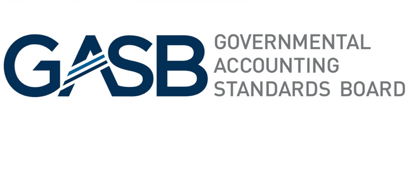The Governmental Accounting Standards Board (GASB) recently released GASB Statement No. 87, Leases. This project is a bit unusual in that it basically mirrors a similar recent project of the Financial Accounting Standards Board. In the end, both the private sector and the public sector will be accounting for operating lease arrangements in basically the same way. When implemented, this standard will change how the accounting and financial reporting is done for most operating lease arrangements, with very limited exceptions. The standard will not affect, however, how capital lease arrangements are currently accounted for and reported.
The general theme is relatively simple – the days of accounting for multi-year operating leases simply as period expenses or expenditures (lessees) and as revenues for lessors are quickly fading away. Eventually, lessees will recognize a lease liability and an intangible asset for the right to use the underlying asset for more than one year. Lessors, on the other hand, will be reporting a leased receivable and a deferred inflow of resources.
General Definitions
GASB Statement No. 87 defines a lease as “…a contract that conveys control of the right to use another entity’s non financial asset (e.g., land, buildings, equipment)…for a period of time…”. The lease term is the period that the lessee has the noncancelable right to use the asset in question. The lease term would also include any periods for options to extend on either the lessee’s or the lessor’s side. As is currently the case for capital leases, the existence of fiscal funding clauses (i.e., clauses that basically put the lessor on notice that future appropriations for repayments are dependent upon governing board actions and cannot be guaranteed) does not affect the lease term or the assessment of the proper accounting and financial reporting, assuming it is reasonably certain that it will not be exercised. Invoking such clauses, especially by North Carolina governments, is extremely rare.
In general, the only type of operating lease arrangements that are basically exempt from this new reporting perspective are those that are short-term in nature. The standard defines a short-term lease as an agreement that, at commencement, “…has a maximum possible term of 12 months or less, including any options to extend, regardless of their probability of being exercised.” For those arrangements that meet these limited terms, the lessee would account for lease payments as period expenses or expenditures and the lessor would account for the receipts of such payments as revenues.

Accounting Requirements – Lessees
For operating lease arrangements that do not meet the aforementioned short-term exception, the lessee will recognize a lease liability and a leased asset. For governmental funds, obviously the asset and liability will be recognized only in the government-wide financial statements. For proprietary funds, the asset and liability will be reported in the funds. The measurement parameters are basically the same as they currently are for capital leases. The liability is reported at the present value of the minimum lease payments. The leased asset should be reported at basically the same amount unless payments were made to the lessor in advance of the commencement of the lease. In that case, the value of those payment should be added to asset valuation.
Once payments begin, the lessee will reduce the liability for the lease and recognize the expense for the interest. The leased asset will be amortized “in a systematic and rationale manner”, generally meaning the lease term (or, if shorter, over the useful life of the underlying asset). Again, this basically mirrors the way capital leases are currently accounted for and reported.
Accounting Requirements – Lessors
At the beginning of the lease term, a lessor will recognize a lease receivable and a deferred inflow of resources, valued generally at the present value of the minimum lease payments. Interest revenue will be recognized as it is earned. Revenue will also be recognized (of course, “in a systematic and rationale manner”) by amortizing the deferred inflows of resources over the life of the lease.
It should be noted that the lessor will not “derecognize” the actual leased asset. In other words, the lessee will report the underlying capital asset (as they still own it) and will continue to depreciate the asset itself, assuming it is not land or some other type of nondepreciable asset. In some rare cases, the lessor may require the lessee to return the asset in its original condition (or possibly in an even enhanced condition). If that were the case, the lessor would not recognize depreciation over the lease term.
General Financial Reporting Requirements
It goes without saying that if it is a GASB standard, there will be note disclosures. The basic disclosures for each are summarized below:
Lessees
- General description of the lease arrangements and unique conditions such as variable payments and residual value guarantees (e.g., situations where the asset must be returned in its original condition)
- Total amount of leased assets and the related accumulated amortization, disclosed separately from other capital assets
- Amount of leased assets and the related accumulated amortization by class, disclosed separately from other capital assets
- Principal and interest requirements, to maturity, for the initial five years individually and then in five-year increments thereafter
Lessors
- General description of the lease arrangement, as well as any unique conditions
- Total amount of revenues recognized in the reporting period for the lease arrangements
Additional Guidance
GASB Statement No. 87 does include extensive guidance for more complicated lease arrangements that are beyond the scope of this post. This includes arrangements such as the following:
- Contracts that have both lease and nonlease components
- Subleases and leaseback transactions
- Leases that are investments
Obviously, lease modifications or even terminations do occur. In the case of a simple modification, the valuations of the leased asset and the lease liability would be remeasured to reflect the new terms. In the case of a termination, the remaining lease liability and the leased asset value for the lessee, as well as the remaining lease receivable and deferred inflow of resources for the lessor, should be reduced. Any remaining differences would then be accounted for as an appropriate gain or loss.
When Do I Have to Worry About This?
The standard is required to be implemented for periods that begin after December 15, 2019. (This is actually one year longer than was initially proposed in the Exposure Draft.) For North Carolina governments, that means for the fiscal year ending June 30, 2021 (sounds a long way off, but it is just around the corner!). Early implementation is, of course, encouraged, but chances are the Local Government Commission will not require it.
If prior periods are being presented, the guidance should be applied retroactively and the statements restated. If such restatement is not deemed practical, then the reason for not restating should be disclosed in the notes. As for retroactive treatment for all leases in general, the GASB did deem this to be a bit impractical and certainly a potential burden. Therefore, the remaining lease payments at implementation should be revalued under the new guidance and the cumulative effect of applying the standard (if any exists) should be reported as a restatement of beginning equity (i.e., fund balance and net position).
At least that is a bit of a silver lining.



